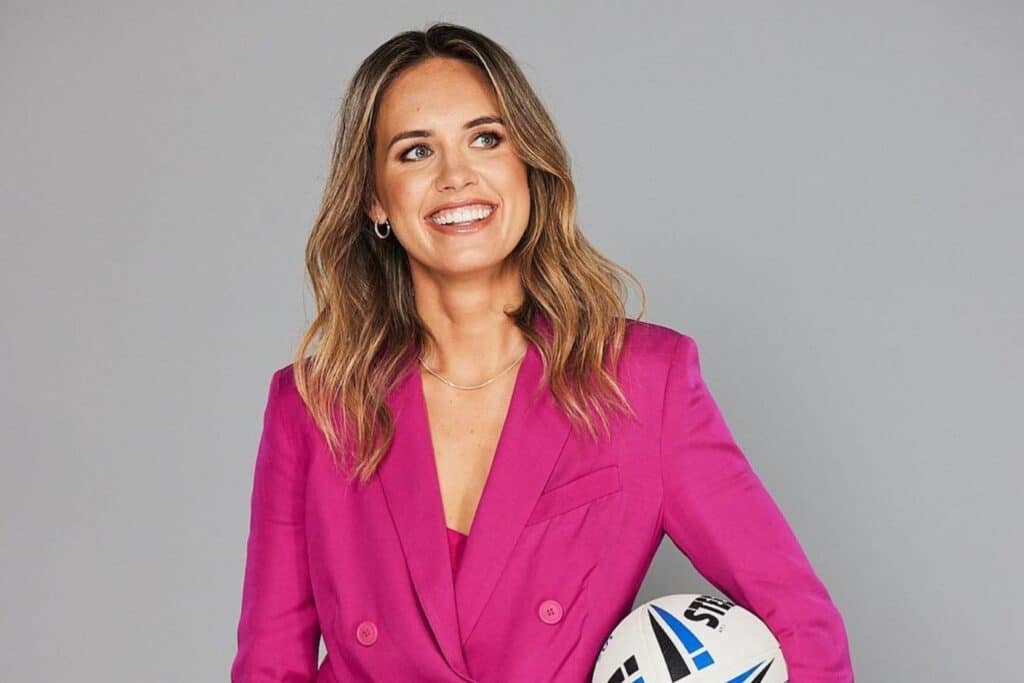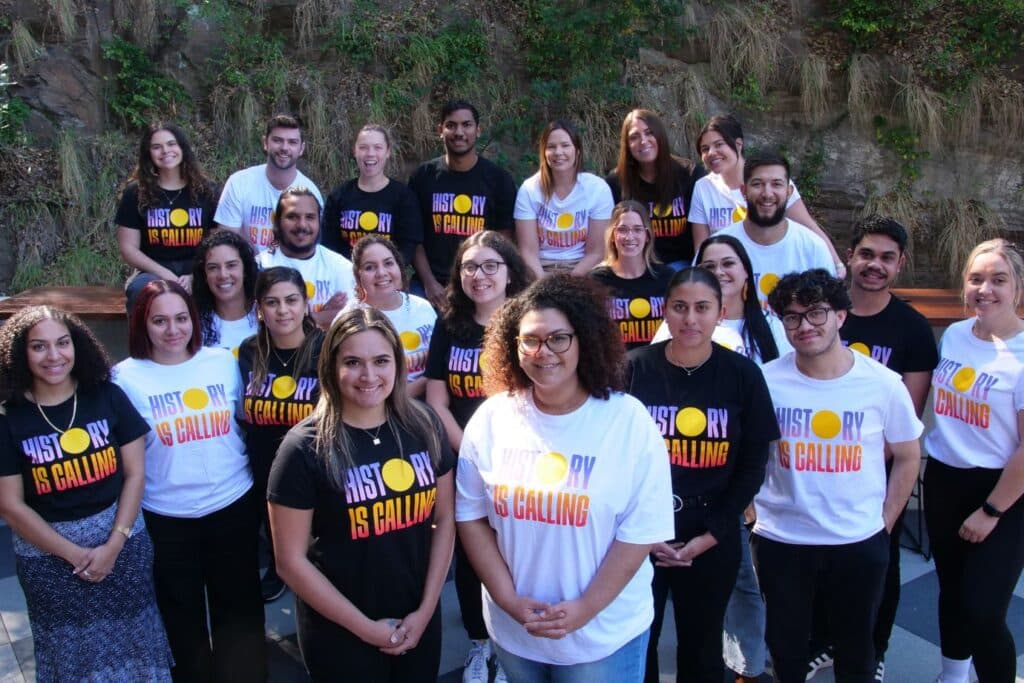The referendum date has been announced today for October 14. The Women’s Agenda Leadership Awards move ahead the night prior on October 13 with Professor Megan Davis, a key architect in the Voice, set to give a rousing keynote. Tickets are still available. Don’t miss out.
Marlee Silva has been having a recurring nightmare.
It’s the day after the referendum for the Indigenous Voice to Parliament. In her dream, she is waking up to the news that it’s been a No vote.
“I just don’t know how we would pick up and carry on,” she says.
“I know we can overcome everything, and we will… I just don’t want to think about the ripple effect and the impact it would have on our community.”
A Gamilaroi and Dunghutti woman, Marlee knows this might be the last chance she will have in her lifetime to create and see change for her people.
Up until now, she’s held back her voice.
“I’ve been towing the line for a while because I don’t want to draw attention to myself – it’s not about any one individual person,” she says.
“I absolutely can’t be silent anymore. I’m not holding myself back.”

Marlee, a writer, journalist and activist, is ready to speak out on the referendum for the Indigenous Voice to Parliament, which is set to take place between September and December. Australians will vote on recognition for Australia’s first peoples in the Constitution and an independent and permanent parliamentary body set up for First Nations’ peoples to have a say in policies that directly affect them.
And according to Professor Megan Davis, co-author of the Uluru Statement from the Heart, it’s critical that young women like Marlee are given platform during this debate, as it’s young First Nations’ voices that have been critically missing up till now.
Thankfully this is changing.
Allira Davis and Bridget Cama, co-chairs of the Uluru Youth Dialogue, are running the Hands on Heart Voice Conference at Barangaroo on Gadigal Land (Sydney) August 24-26.
The goal of the conference is to educate, activate and connect nearly 100 young non-Indigenous voices before the referendum.
“Leaning on our allies right now is really crucial at this point,” Allira Davis says.
“Once people understand the message, it’s powerful.”
What is the Voice?
The Indigenous Voice to Parliament is one of three pillars that constitute the Uluru Statement from the Heart, written in 2017 by more than 250 Aboriginal and Torres Strait Islander delegates of the National First Nations Constitutional Convention.
Should the referendum end in a Yes vote, the Voice in Parliament, an independent and permanent parliamentary body, would be selected by Aboriginal and Torres Strait Islander peoples from local communities. It would be gender-balanced, involve youth representatives and allow First Nations’ voices to be heard.
It is the first step of the full implementation of the Uluru Statement from the Heart: voice, treaty and truth. Following the Voice, Makarrata, meaning “the coming together after a struggle”, will allow for treaty and truth-telling processes for Australia’s history.
While other former British colonies like New Zealand, Canada and the United States have a treaty with its Indigenous peoples, Australia does not.
Young voters and young voices
Young Australians have immense power to decide the fate of the Indigenous Voice to Parliament. The Australian Electoral Commission (AEC) estimates Millennials and Gen Z make up about 43 per cent of the nation’s voting population.
They have already shown their strength in numbers in the 2022 federal election. After nine consecutive years of a conservative government, reports found young people were to blame in the shift to a Labor-led government and a record of 12 independent seats in the Upper House.
The focus on “issue-based politics” emerging this decade is the driving force for this shift. Research shows young people become more engaged when political conversations are more issue-based or policy-based, rather than partisan-based.
You only have to look at the Black Lives Matter, climate action and reproductive rights movements – to name a few – to see that it is largely young people spearheading this action.
But young people can’t vote for a cause they can’t see, which is what Cobble Cobble woman Professor Megan Davis is concerned about. In a recent interview on the weekly Women’s Agenda podcast, The Crux, she expressed her concern over who is driving the conversations surrounding the Voice to Parliament.

“All we have is bureaucrats and politicians who think they know better, who think they know best, and they don’t allow Aboriginal and Torres Strait Islander people to have a voice,” she says.
“We know that Gen Z is leading the nation as Yes voters. Where are their faces? Where are the faces of the Australians who support this?”
Professor Davis says it’s up to young people, particularly young Indigenous women, to step up and let their voices be heard in the conversation.
“Because they will inherit this. This is their future. And the country needs to listen to what they are saying,” she says.
“And it’s really a large proportion of Gen Z who are saying Yes.”
To spotlight Millennial and Gen Z voices, Allira Davis and Bridget Cama, co-chairs of the Uluru Youth Dialogues, are targeting young people in their Hands on Heart Youth Voice National Conference, which will take place August 24-27.
Allira Davis, a Cobble Cobble woman, has worked in public service, policy programs and advocacy. Through working with the nation’s leaders, she has always been told that young people are the hope for the future.
“So that’s what we’re trying to do,” she says.
“We’re trying to be hopeful… getting a bunch of young, amazing, deadly people together and hopefully pushing this movement towards the Yes vote.”
During the Conference, the team at Uluru Youth Dialogues will break down key elements of the referendum, including what a referendum and the Constitution actually is, how the Voice would operate and more. All the information they will share with these young people is available on the Uluru Statement’s website and social media accounts.
Bridget Cama, a Wiradjuri First Nations and Pasifika Fijian woman, is an associate of the Indigenous Law Centre at UNSW. She says informing young people on the key details of the vote, including all the legal aspects of it, will help spread information to Australians easily.
“We know that the community is thirsty for information,” she says.
“They just don’t know where to get it from at the moment because the issue is being so politicised in the media.
“This was an issue that was never meant to be politicised in terms of party lines. This was from the Uluru Statement, which was an invitation to the rest of Australians to make a decision of whether or not they would walk with us to Voice and Makarrata – treaty and truth.”
‘My role, my duty’
As discussions and debates over the Indigenous Voice to Parliament continue to surface and grow in volume, Marlee is vividly reminded of her school days.
She was in Year 7 and the only Aboriginal-identifying student in her Sutherland shire high school when Kevin Rudd delivered the Sorry speech in 2007. Suddenly, all eyes were on her.
“I got looked at as a bit of a unicorn… a symbol,” she says.
“I became the educator and the example of Aboriginal people for my peers. And that was a lot of pressure, particularly because I was still a kid that was still learning. Even now, I’m still learning.”
Marlee was discovering her own identity and her own culture throughout high school, yet as a young person, she was still relied on to educate everyone around her – even her teachers.
The pressure to be the tokenistic “example” and information-bearer for her school – all the while learning of the genocide of her family and culture herself and constantly dealing with racism – infuriated her.
“I was such an angry kid, because I had come to learn a lot more about the history and the genocide, this suffering and sacrifice of my family, but also the broader community. That made me angry,” she says.
“And then the way that kids would pick on me with racism made me angrier.
“And the way that teachers didn’t listen to me when I told them what was happening made me the angriest.”
As a young adult, Marlee channelled the anger and frustration she felt into giving back to the community in various roles in the non-for-profit sector, including working as the co-CEO for the Aboriginal education charity AIME Mentoring.
In 2020, she published her first book My Tidda, My Sister: Stories of strength and resilience from Australia’s first women, where she spotlighted stories from important First Nations’ women of the past, present and future.
But her career change into sports media was fuelled by the pressure she felt and continues to feel as the young “spokesperson” for First Nations people amongst her friends, peers and community.
“In my personal life, I have become the person that people are turning to to understand what’s happening,” she says.
So she took a step back away from the spotlight. Her voice – a young, Indigenous woman’s voice – was being heard, but her mental health was paying the price.
Since making the change and becoming a sports presenter with the NRLW, work has become a point of refuge for Marlee, away from the pressure to be the educator, the example, the reference point that she always was in school and beyond.
But being one of the “statistically insignificant” Indigenous people that appear on television in Australia, Marlee now feels it is her duty to speak up.
“I am in a small percentage of people who are on TV who have stories like mine, who come from families like mine, and therefore it is my role and my duty to my community to talk to non-Indigenous people and explain what it (the Voice) means,” she says.

A simple message
The referendum has been announced to take place on October 14, where Australians will vote on the question:
“A Proposed Law: to alter the Constitution to recognise the First Peoples of Australia by establishing an Aboriginal and Torres Strait Islander Voice. Do you approve this proposed alteration?”
For Millennials and Gen Z, this will be their first ever vote to amend the constitution.
There has not been a successful referendum since 1977, and out of 44 referendums in Australia, just eight have carried.
A study from the Australian Electoral Study in 2022 asked: “If a referendum were held to recognise Indigenous Australians in the Constitution, would you support or oppose such a change to the Constitution?”
The results found 90 per cent of people aged 18-34 either supported or strongly supported the referendum.
However, the No campaign has made its mark in recent months. Polling from The Guardian shows overall support for the Voice has fallen below 50 per cent, as of early August 2023.
Results like this are fuelling Marlee’s recurring nightmare.
“I just don’t want us to have to figure out what life after a No vote looks like,” she says.
“It shouldn’t be about left and right because, at the end of the day, this is about our people surviving and prospering.
“This has nothing to do with politics. This is all to do with the survival of our first people.”
In a world where the attention economy is sparse, information is abundant, misinformation is rife and young people are looking for short, easy answers to large-scale issues, Marlee has a simple response.
“The Voice will not change a non-Indigenous person’s life. But it can change mine. It can change my community’s for the better,” she says
“It can mean that the horrible inequities that still exist can finally, maybe, be dissolved.”


